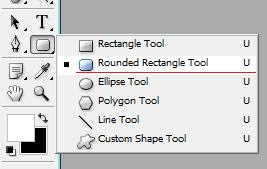I'm still in recovery-mode after an amazing, intense, and inspiring
Barcampnfp at the Mozilla HQ in London. 100 or so non-profit geeks and techies came together to share their experiences, deliver sessions and to share a few laughs (thank you
Luke).
This was my first Barcamp, and I must admit that Barcamp
"rule" number eight had me a little bit worried:
8th Rule: If this is your first time at BarCamp, you HAVE to present. (Ok, you don't really HAVE to, but try to find someone to present with, or at least ask questions and be an interactive participant.)
At first I wasn't really sure what I wanted to present on, but
Cath (colleague and co-presenter) and I decided to stick with what we knew, engaging with young people online. The proposed session turned out to be quite popular. The core principle behind the session was that you need to have a great deal of respect for the people you're trying to engage with online, and everything you do must flow from that principle.
The presentation is embedded below, with some additional notes below that - Enjoy!
R Real: Don't pretend to be something you're not. I'm a 28-year-old guy and I'm Social Media Manager at
Girlguiding. Most of the people that form our online communities are members of Girlguiding, and many of them are young people. I don't pretend that I'm a member, and I don't pretend to have an in-depth knowledge of youth culture. If I did, I would be quite easily found out, and it would be immensely condescending. Treat your community with respect.
E Engaging: Give your audience the content they want. If you do this creatively and intelligently, you should be able to achieve the things that help you meet your business plan aims. If you're not sure what your audience wants, there are a number of ways you can find out:
- Ask them (sounds obvious, right? But I don't see it happen very often)
- Experiment with different types of content and measure responses (Don't have any cash for paid-for monitoring/measurement? You can get pretty rich data using free tools)
- Look at what other organisations (commercial and non-profits) are doing to engage and excite young people.
S Social: Talk to your community, respond to questions, offer advice, share a joke, share criticism and use it to start a conversation and improve your offering. It's a great way to keep your finger on the pulse, to help you understand what young people are passionate about, and to build a warm and engaged community. Oh, and it's the
most enjoyable part of any community manager's job, and a pretty key part of 'social' media too ;).
P Promote: Young people are doing amazing things everyday, sometimes they're doing these things with your organisation, sometimes they aren't. Promote the good work that the young people in your community are doing, even if they aren't doing it with/for your organisation. Celebrate their passion, enthusiasm and dedication. They'll appreciate it, and you'll find that your online communities will grow and flourish.
E Empower: Help your online communities to help you. You should encourage young people to become part of your decision making processes, you should encourage them to become spokespeople and ambassadors, and you should give them opportunities to represent your organisation at events that you have been invited to attend. I firmly believe that all youth-focused organisations should support, encourage and provide a platform for young people to speak out on the issues that impact them and their peers. Let them know that their views and opinions matter, and demonstrate this in a tangible way.
C Call to action: Invite young people to join your campaigns and to support your causes. Don't be afraid to ask for this support - If you've empowered young people by bringing them in to your decision making processes, the campaigns that you launch will have their backing because those campaigns are ones that your community has agreed are important.
T Teach: If you're encouraging young people to join your online communities, you have a responsibility to ensure that they are safe online. You need to ensure that you are providing access to resources that help to keep them safe from physical harm, online bullying, fraud, and personal reputational damage. If you aren't doing this, then you are failing them. This doesn't need to be overly complicated or laborious, there is a whole host of great resources already available online:
That's it from me for now. The presentation was necessarily short, but have I missed any key areas that really should be included? Sock it to me in the comments.
